
The Brood are a fictional race of insectoid, parasitic, extraterrestrial beings appearing in American comic books published by Marvel Comics, especially Uncanny X-Men. Created by writer Chris Claremont and artist Dave Cockrum, they first appeared in Uncanny X-Men #155.
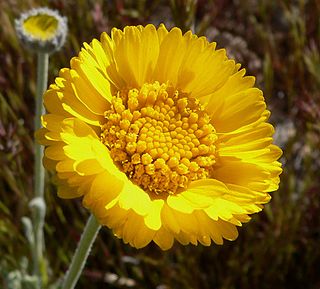
Baileya is a genus of plants in the aster family Asteraceae. All are native to the southwestern United States and to Mexico.
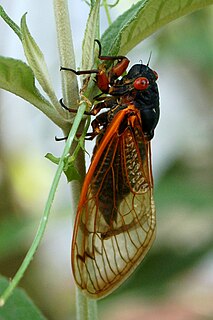
Brood XIX is the largest brood of 13-year periodical cicadas, last seen in 2011 across a wide stretch of the southeastern United States. Periodical cicadas are often referred to as "17-year locusts" because most of the known distinct broods have a 17-year life cycle. Brood XIX is one of only three surviving broods with a 13-year cycle. It is also notable because it includes four different 13-year species, one of which was discovered in Brood XIX in 1998 by scientists listening to cicada songs.

Baileya multiradiata is a North American species of sun-loving wildflowers native to the deserts of northern Mexico and the Southwestern United States. It has been found in the States of Sonora, Chihuahua, Coahuila, Durango, Aguascalientes, California, Arizona, Nevada, Utah, New Mexico, and Texas.

Baileya is a genus of moths of the family Nolidae. The genus was erected by Augustus Radcliffe Grote in 1895.
Baileya pauciradiata is a North American species of flowering plant in the daisy family which is known by the common names laxflower and Colorado desert marigold. It is native to the deserts of northwestern Mexico and the Southwestern United States. It has been found in the States of California, Arizona, Nevada, Baja California, and Sonora.

Baileya pleniradiata is a North American species of flowering plant in the daisy family, known by the common name woolly desert marigold. It is native to desert regions of the southwestern United States and northern Mexico, where it grows in sandy habitats. It has been found in the States of Chihuahua, Sonora, Baja California, Arizona, Utah, and Nevada.

Cha Cha is the soundtrack to the 1979 Dutch film Cha Cha, written by Herman Brood and directed by Herbert Curiel. It features songs by Herman Brood and his band The Wild Romance, Nina Hagen, Lene Lovich, Les Chappell, and others.

Baileya ellessyoo is a moth of the family Nolidae first described by Vernon Antoine Brou Jr. in 2004. It is found in the US states of Alabama, Florida, Georgia, Louisiana, Mississippi, Missouri, North Carolina and Texas.

Broods is a New Zealand music duo from Nelson, composed of Georgia Josiena Nott on lead vocals, with older brother and multi-instrumentalist Caleb Allan Joseph Nott on production and backing vocals. They released the single "Bridges", which went to No. 8 on the New Zealand single chart, and signed with Capitol and Polydor Records. They released their self-titled debut EP, Broods, on 30 January 2014, which was followed by a full-length album, Evergreen, on 22 August 2014. The band has toured with Ellie Goulding, Haim, Sam Smith, Tove Lo and Taylor Swift. They have won ten New Zealand Music Awards. On 24 June 2016, Broods released their second album, Conscious. They released their third album Don't Feed the Pop Monster on 1 February 2019.
Brood XXII is a brood of 13-year periodical cicadas, last seen in 2014 in a geographic region centered on Baton Rouge, Louisiana, as well as other locations in southeast Louisiana and southwest Mississippi. Periodical cicadas are often referred to as "17-year locusts" because most of the known distinct broods have a 17-year life cycle. Brood XXII is one of only three surviving broods with a 13-year cycle. The next emergence of The Baton Rouge Brood is expected in 2027.
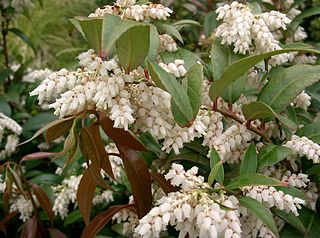
Leucothoe axillaris is a shrub native to the southeastern United States, with the common names swamp dog-laurel and coastal dog-hobble. It has been reported from Louisiana, Mississippi, Alabama, Florida, Georgia, North and South Carolina and Virginia. It grows on floodplains in coastal areas at elevations of less than 200 m (660 ft).
Ira Schreiber Nelson (1911–1965) was an American botanist, working in Louisiana.

Baileya australis, the small baileya moth, is a moth of the family Nolidae. The species was first described by Augustus Radcliffe Grote in 1881. It is found in North America, where it has been recorded from Quebec and New York to Florida, west to Texas, north to North Dakota and Ontario.

Baileya levitans, the pale baileya, is a species of nolid moth in the family Nolidae. It was described by Smith in 1906 and is found in North America.

Baileya dormitans, the sleeping baileya, is a nolid moth. The species was first described by Achille Guenée in 1852. It is found in North America.
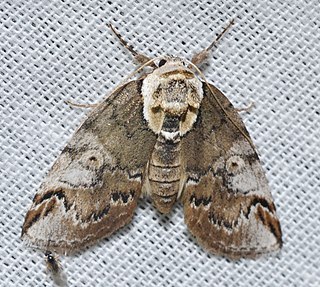
Baileya ophthalmica, the eyed baileya, is a nolid moth. The species was first described by Achille Guenée in 1852. It is found in North America.
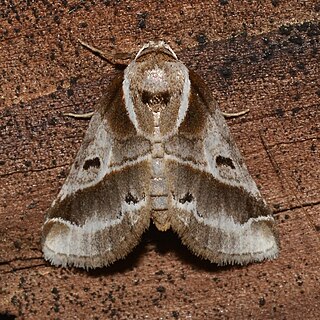
Baileya doubledayi, or Doubleday's baileya, is a nolid moth. The species was first described by Achille Guenée in 1852. It is found in North America.













